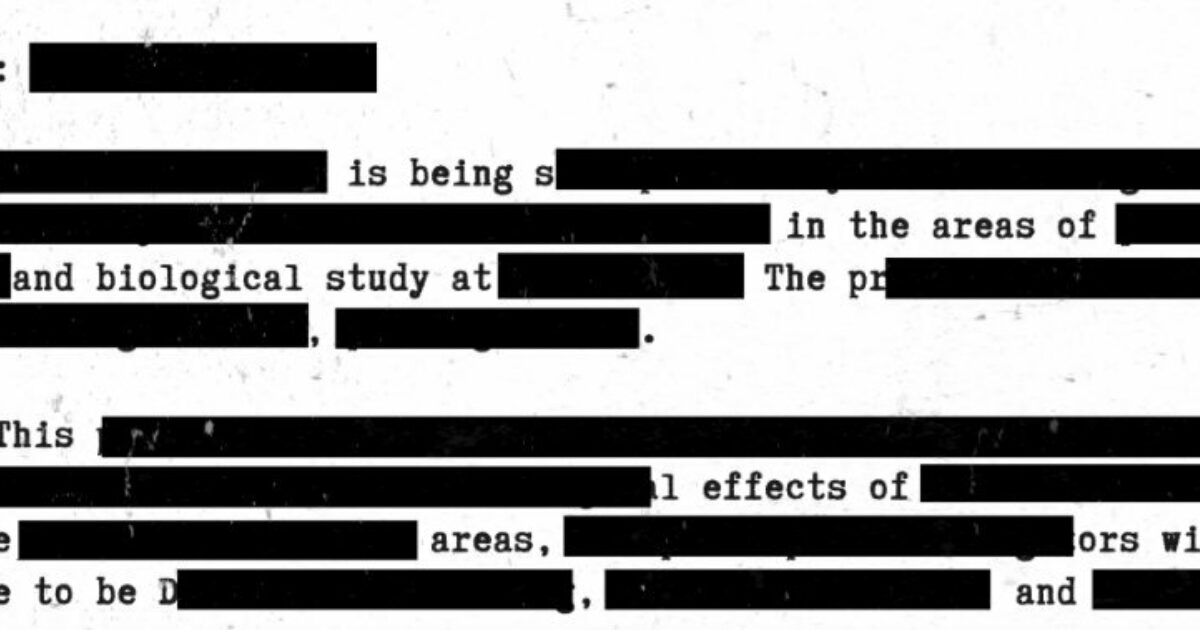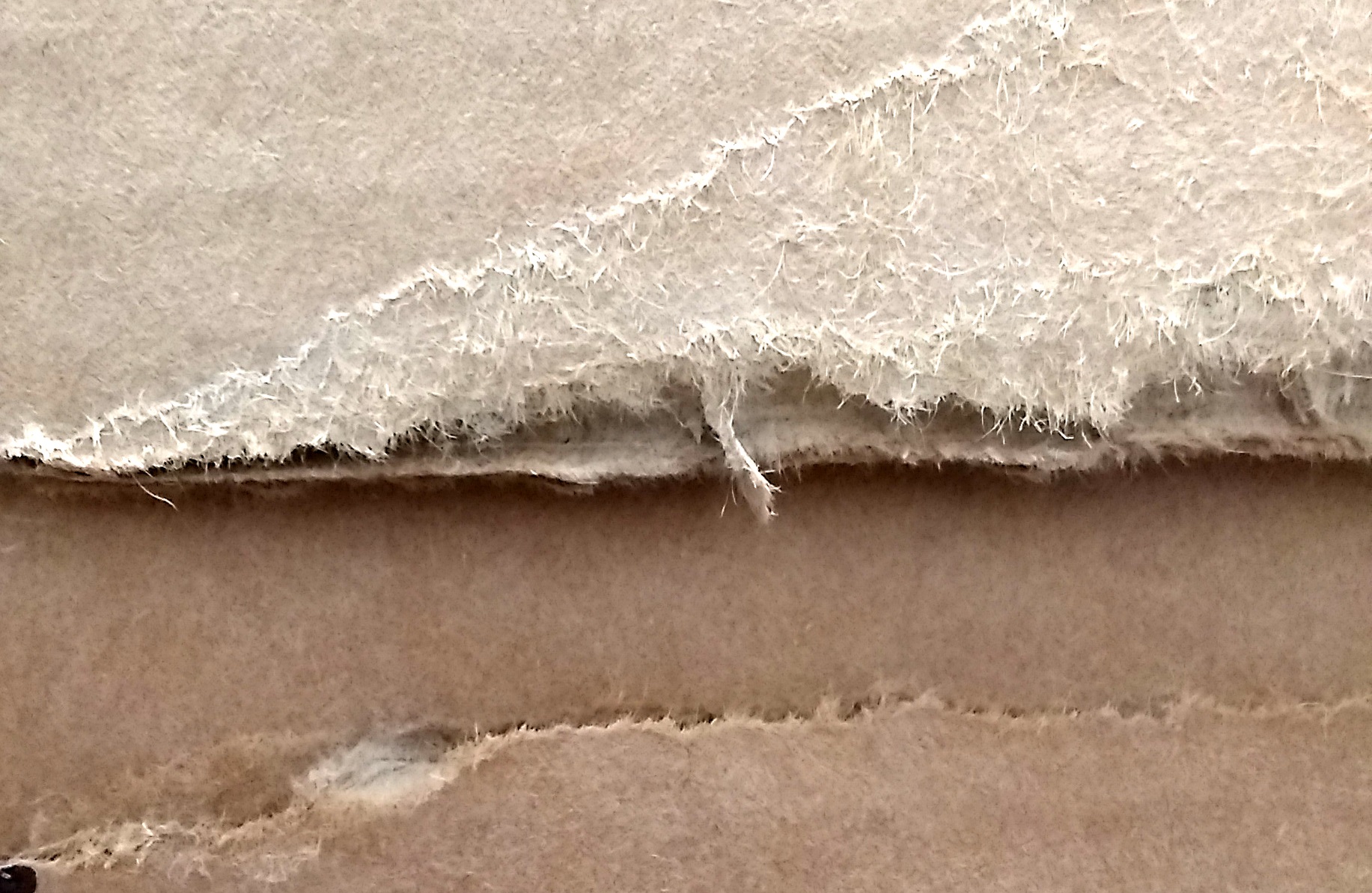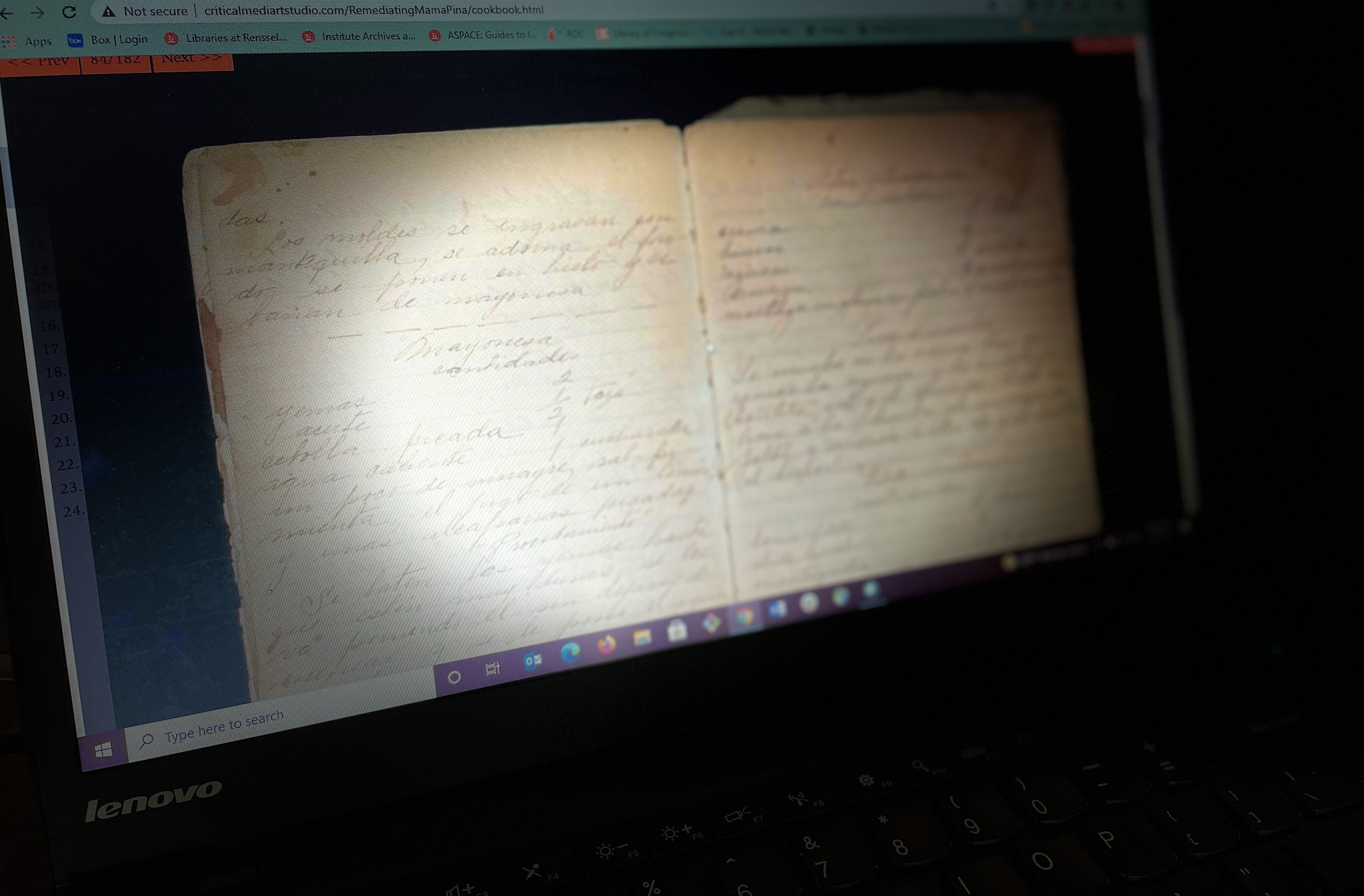October 6th: Paper Futures

Readings:
Bajpai, Pratima. “Collection Systems and Sorting of Recovered Paper.” In Recycling and Deinking of Recovered Paper, 37-53. Elsevier, 1st Edition, 2018.
Berman, Kim S. “Engaging Government Policies: Phumani Paper.” In Finding Voice: A Visual Arts Approach to Engaging Social Change, 73-105. University of Michigan Press, 2017.
Pinker, Annabel. “Papering Over the Gaps: Documents, Infrastructure and Political Experimentation in Highland Peru.” Cambridge Journal of Anthropology 33, no.1 (Spring 2015): 97-112.
Sellen, Abigail J., and Richard H.R. Harper. “The Future of Paper.” In The Myth of the Paperless Office, 185-212. MIT Press, 2001.
von Hilgers, Philipp. ”Power Games in the Baroque Period.” In War Games : A History of War on Paper, 11-30. Translated by Ross Benjamin. MIT Press, 2012.
Young, Liam Cole. “Administration I: “The State, The Facts, and Double-Entry Book-keeping”.” In List Cultures: Knowledge and Poetics from Mesopotamia to BuzzFeed 67-84. Amsterdam: Amsterdam University Press., 2017.
Suggested Reading:
Newell, Joshua and Robert O. Voss. “‘Papering’ Over Space and Place: Product Carbon Footprint Modeling in the Global Paper Industry.” In The New Geographies of Energy: Assessment and Analysis of Critical Landscapes. Edited by Karl Zimmerer. Routledge, 2013.
Monthly Make (for November): Make something from paper that can move, act, travel, shift, animate, transform or otherwise engage the concepts of movement and/or mobility in materialized form!
November 3rd: Movement & Mobility

Readings:
Eichhorn, Kate. “Redefining a Movement: The Riot Grrrl Collection at Fales Library and Special Collections.” The Archival Turn in Feminism: Outrage in Order 85-121. Temple University Press, 2013.
Ellis, Patrick. “What Made the Mechanicals Move? Postcards in Transit.” In Provenance and Early Cinema. Edited by Bernardi Joanne, Usai Paolo Cherchi, Williams Tami, and Yumibe Joshua, 179-91. Bloomington, Indiana, USA: Indiana University Press, 2020.
Greenburg, Ivan. “Postage and Power: U.S. Nationalism and the 1970s “Bicentennial” and “Americana” Stamp Series.” Journal of Social History 49, no. 1 (Fall 2015): 53-76.
Harris, Karen L. “Paper Trail: Chasing the Chinese in the Cape (1904-1933).” Kronos 40 (2014): 133-153.
Haug, Mary-Elise. “The Life Cycle of Printed Ephemera: A Case Study of the Maxine Waldron and Thelma Mendsen Collections.” Winterthur Portfolio 30, no.1 (Spring 1995): 59-72.
Rouse, R., Holloway-Attaway, L. “A Prehistory of the Interactive Reader and Design Principles for Storytelling in Postdigital Culture.” Book 2.0 9, no 2 (2020): 7-42.
Object Lesson: With William Buxton, Professor Emeritus, Department of Communication Studies at Concordia University, Canada!
Bill will share from his introduction to and editing of the new edition of Harold Innis’s “Empire and Communications” for University of Toronto Press. The object lesson will focus on the leitmotif of media mobility in Innis’ work.
Bill suggests the following as supplemental reading: “The Coming of Paper” by Harold Innis
Monthly Make (for December): Put paper in relation to a body or bodies – for example, make something wearable/functional/ that you can play, that enhances your senses, isolates a sense (including sound or smell!!!) or otherwise augments or engages a body, human or non-human!
December 8th: Paper & the Body

Readings:
Chen, Anna. “Perfume and Vinegar: Olfactory Knowledge, Remembrance, and Recordkeeping.” The American Archivist 79, no. 1 (Spring/Summer 2016): 103-120.
Emery, Joy Spanabel. “Early History of Pattern Companies:1860s-1880s” and “New Markets and Expansion: 1880s-1900” in A History of the Paper Pattern Industry: The Home Dressmaking Fashion Revolution, 40-113. Bloomsbury Visual Arts, 2020.
Linker, Beth. “Tracing Paper, the Posture Sciences, and Mapping of the Female Body. In Working with Paper: Gendered Practices in the HIstory of Knowledge 124-139. Edited by Carla Bittell, Elaine Leong and Christine von Oertzen. University of Pittsburgh Press, 2019.
Sungsun, Hong. “A Study of Paper Couture Based on Paper Modeling Techniques.” Journal of Fashion Business 18, no.3 (2014): 73-90.
Weaver, William. “Menus” and “Diet and Health.” In Culinary Ephemera: An Illustrated History, 89-98, 135-156. University of California Press, 2010.
Zieger, Susan. “Holmes’s Pipe, Tobacco Papers and the Nineteenth-century Origins of Media Addiction.” Journal of Victorian Culture 19, no.1 (2014): 24-42.
Media:
Gallagher, Rob. “Eliciting Euphoria Online: The Aesthetics of “ASMR” Video Culture.” Film Criticism Journal, University of Michigan 2016.
“ASMR – Aggressive Paper Ripping & Some Paper Sounds (No Talking).”
“ASMR – Edible Paper Eating Sounds (No Talking) Intense Ripping, Soft Chewing.”
“WSO – Tan Dun Paper Concerto.”
Object Lesson: With Victoria Zoe!
In this object lesson, Victoria Zoe will share cut-ups and talk about them in relation to paper and the body. The cut-ups (although currently works-in-progress) are a mode of physically exploring one of my thesis chapters in which I look at how the cut-up is used in contemporary experimental literature (Foer’s Tree of Codes and Rawle’s Woman’s World).
Monthly Make (for January): Think back to an early memory of craft with paper (such as kindergarten projects made for a parent!) and revisit this type of work today.
January 12th: Craft

Readings:
Ash, Jared. “The Things Paper Carries.” Art in Print 6, no. 5 (2017): 11-15.
Friedman, Michael and Rougetet, Lisa. “Folding in Recreational Mathematics during the 17th–18th Centuries: Between Geometry and Entertainment.” Acta Baltica Historiae et Philosophiae Scientiarum 5 No. 2 (Autumn 2017): 5-34.
Hatori, Koshiro. “History of Origami in the East and the West before Interfusion.” In Origami 5, 17–26. A K Peters/CRC Press, 2011.
Kumbier, Alana. “Queer Zines and Archival Pedagogies.” In Ephemeral Material : Queering the Archive 189-230. Litwin Books, 2009.
McKay, Barry and Diane Patterson. “John Baskerville’s Decorated Papers.” In John Baskerville: Art and Industry in the Enlightenment 151-165. Liverpool University Press, 2018.
Peltz, Lucy. Facing the Text: Extra-Illustration, Print Culture, and Society in Britain 1769-1840. [reading pgs TBD]
Scott, Janet Lee. “Learning the Trade, Learning to Craft.” in For Gods, Ghosts and Ancestors: The Chinese Tradition of Paper Offerings 159 – 183, Hong Kong: Hong Kong University Press, 2007.
Media: Ron Resch. “Paper and Stick Film.”
Object Lesson: Mike Sweeney, “New and Old Layering of Meaning”
In this object lesson Mike hopes to touch on issues about how meaning develops in the space between creative intent/process, the present context, and a reader’s experience. Mike Sweeney shreds found paper and weaves it into new sheets, noisy with the juncture of fragmentary material histories.
Monthly Make (for February): Share something secret via the medium of paper (ie., make your own zine, send a message in code or invisible ink)
February 9th: Illicit Paper

Readings:
Buckley, Sandra. “‘Penguin in Bondage’: A Graphic Tale of Japanese Comic Books.” In The Visual Culture Reader. Edited by Nicholas Mirzoeff, 495 – 503. Taylor & Francis: 2012.
Chai, Sookung “Vero.” Editing the Archives: Alexandra Bell’s Annotation, Redaction, and Epistemic Resistance in Counternarratives.” Art Journal
Dooley, John F. “Crypto Goes to War: The American Revolution.” In History of Cryptography and Cryptanalysis: Codes, Ciphers, and their Algorithms, 43-61. Springer, 2018.
Fuller, Wayne E. “The Attack Upon Impure Literature in the Mail.” In Morality and the Mail in Nineteenth-Century America, 129-143 . University of Illinois Press, 2003.
Lim, Samson. “Photography and Forgery in Early Capitalist Siam.” Technology and Culture 60, no. 3 (July 2019): 795-815.
Sigel, Lisa Z. “Filth in the Wrong People’s Hands: Postcards and the Expansion of Pornography in Britain and the Atlantic World, 1880-1914.” Journal of Social History 33, no.4 (Summer 2000): 859-885.
Vidal-Naquet, Clémentine and Anne Stevens. “Putting Emotions on Paper. Conjugal Relationships of French Couples During the First World War.” Clio. Women, Gender, History, no. 47, Gender and the emotions (2018): 115-136.
Monthly Make (for March): Do something destructive with paper, but with aesthetic values in mind! Purposefully ruin/degrade or destroy a piece of paper to see what happens. Consider paper destruction with “aesthetics of beauty” in mind!.
March 9th: Degradation/Ruin

Readings:
Buckingham, Felicity. “The Paper Artefacts from the Former Mechanics’ Institute, Geelong.” Australasian Historical Archaeology 37 (2019): 81-86.
Cox, Richard. “The Great Newspaper Caper: Backlash in the Digital Age.” First Monday 5 (2000): no pagination. [essay in response to Baker, Double-Fold]
Junqua, Amelie. “Eighteenth-century Paper: The Readers’ Digest.” In Bellies, Bowels and Entrails in the Eighteenth Century. Edited by Rebecca Anne Barr, Sylvie Kleiman-Lafon, and Sophie Vasset, 128-144. Manchester University Press, 2018.
Scott-Warren, Jason. “Reading Graffiti in the Early Modern Book.” Huntington Library Quarterly 73, no. 3 (September 2010): 363-381.
Solberg, Emma Maggie. “Human and Insect Bookworms.” Postmedieval: A Journal of Medieval Cultural Studies 11, (2020): 12-22.
Weld, Kristen. “Excavating Babylon,” and “Archival Culture, State Secrets, and the Archive Wars.” In Paper Cadavers: The Archives of Dictatorship in Guatemala 29-68. Duke University Press, 2014.
Object Lesson: Maria Holden and Geof Huth
Monthly Make (for April): Instrumentalize paper! Make a tool you can use out of paper, or use paper for some un-papery use e.g. to stabilize a table, or to patch a window – the more “useful” the better!
April 13th: Paper Utility

Readings:
Ban, Shigeru, Ian Luna, and Lauren A Gould. Shigeru Ban : Paper in Architecture. New York: Rizzoli International Publications, 2009.
Bloom, Jonathan. Paper before Print: the History and Impact of Paper In the Islamic World. New Haven: Yale University Press, 2001.
Corzo-Duchardt, Beth. “Paper Girls: Gender and Materiality in Turn-of-the-Century Outdoor Advertising.” Feminist Media Histories 1.3 (2015): 38-61.
Knight, Peter. “Reading the Ticker Tape.” In Reading the Market: Genres of Financial Capitalism in Gilded Age America 59-100. Johns Hopkins University Press; Illustrated edition, 2016.
Kwakkel, Erik. “Slips, Strips, and Scraps: Messaging,” and “Slips, Strips, and Scraps: Scholarly Notes.” In Books Before Print. Medieval Media Cultures 177-186. Leeds: ARC Humanities Press, 2018.
te Heesen, Anke . “The Materiality of Excerpts and Quotations: Writing on, Cutting, and Pasting Paper.” In The Newspaper Clipping: A Modern Paper Object 15-27. Manchester University Press, 2014.
Media:
Shingeru Ban – TedX Tokyo Talk
Object Lesson: Please stay tuned! With Ilinca Iurascu.
Ilinca Iurasca will share “Unpacking the 19th Century Cardboard Box:” The cardboard box as a medium of storage, transmission and processing at the intersection of 19th c histories of labor, global supply chains and data flows.
May (Date TBD): Unpaper

Readings:
Korbelyiovaa, Lucia et.el. “Paper vs leaf: Carbon Footprint of Single-use Plates Made from Renewable Materials.” Sustainable Production and Consumption 25 (2021): 77-90.
McKinney, Cait. “The Internet That Lesbians Built: Newsletter Networks.” Information Activism: A Queer History of Lesbian Media Technologies. Duke University Press. (2020)
Nowviskie, Bethany, and Wayne Graham. “Seeing Swinburne: Toward a Mobile and Augmented-Reality Edition of Poems and Ballads, 1866.” In Seeing the Past with Computers: Experiments with Augmented Reality and Computer Vision for History, 50-68. Edited by Kevin Lee and Timothy Compeau. University of Michigan Press, 2019.
Pegler-Gordon, Anna. “Photographic Paper Sons” Resisting Immigration Identity Documentation, 1893-1943.” In Sight of America : Photography and the Development of U.S. Immigration Policy 67-103. Berkeley: University of California Press, 2009.
Sepulveda, Gabriela Acevedes. “[Re]Activating Mama Pina’s Cookbook.” Feminist Media Histories 3, no.3 (159-166): 2017.
Williamson, Colin and Dana Driskel. “Reclaiming “Lost” Films: The Paper Print Fragment Collection and the American Film Company.” The Moving Image: The Journal of the Association of Moving Image Archivists, Vol. 16, No. 1 (Spring 2016), pp. 125-134
Media: [Re] Activate: Mama Pina’s Cookbook
Object Lesson: With Katherine “Kappy” Mintie, Senior Researcher in Art History at the Lens Media Lab at Yale University.
This “Object Lesson” will focus on a project at the Lens Media Lab at Yale University to characterize silver gelatin papers, the dominant photographic paper used during the 20th century. The presentation will outline how the project came about, the process for characterizing the papers, and how this data can be used to better understand the aesthetic choices of photographers, the visual qualities of photographic prints, and the photographic industry.